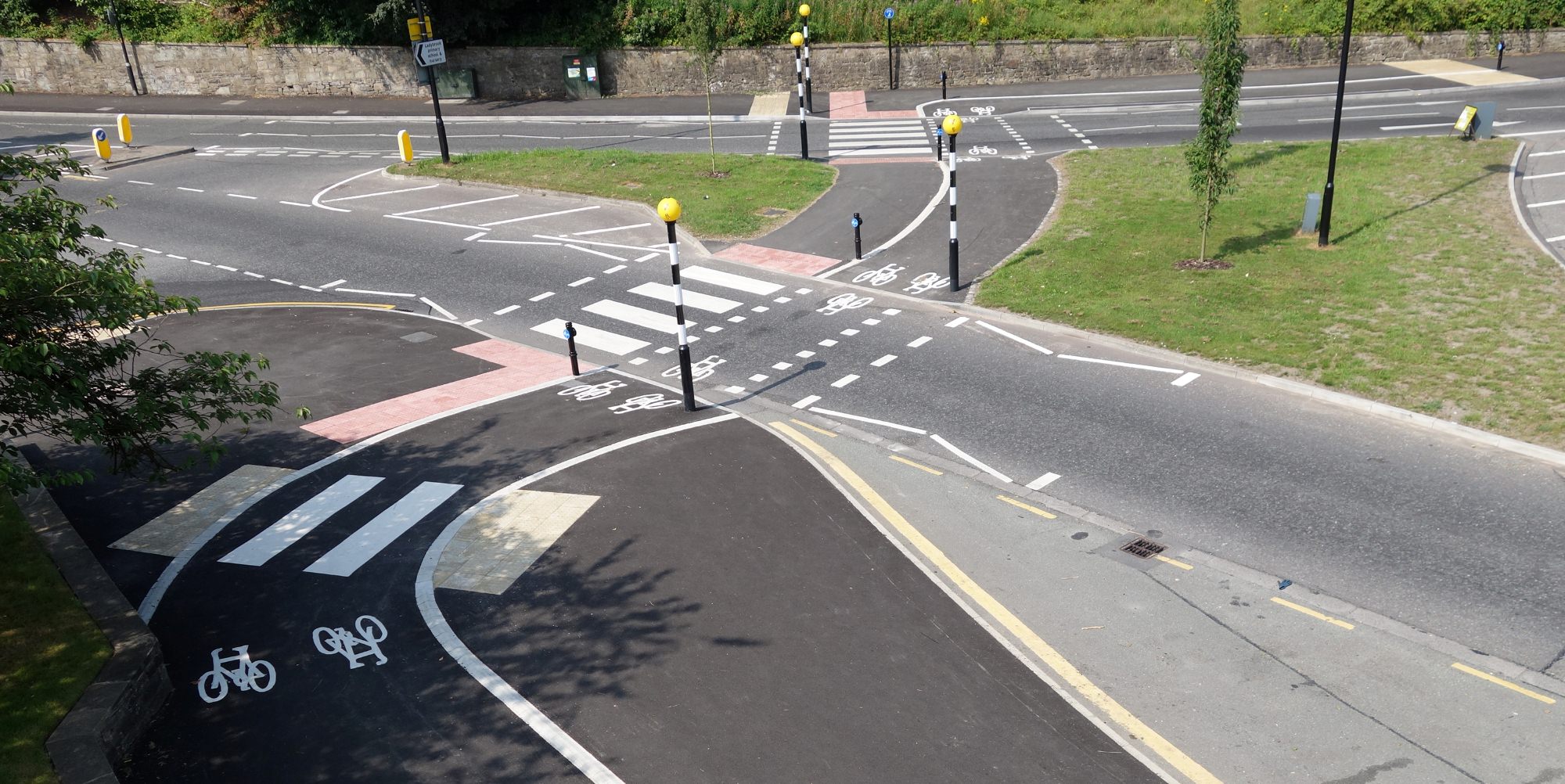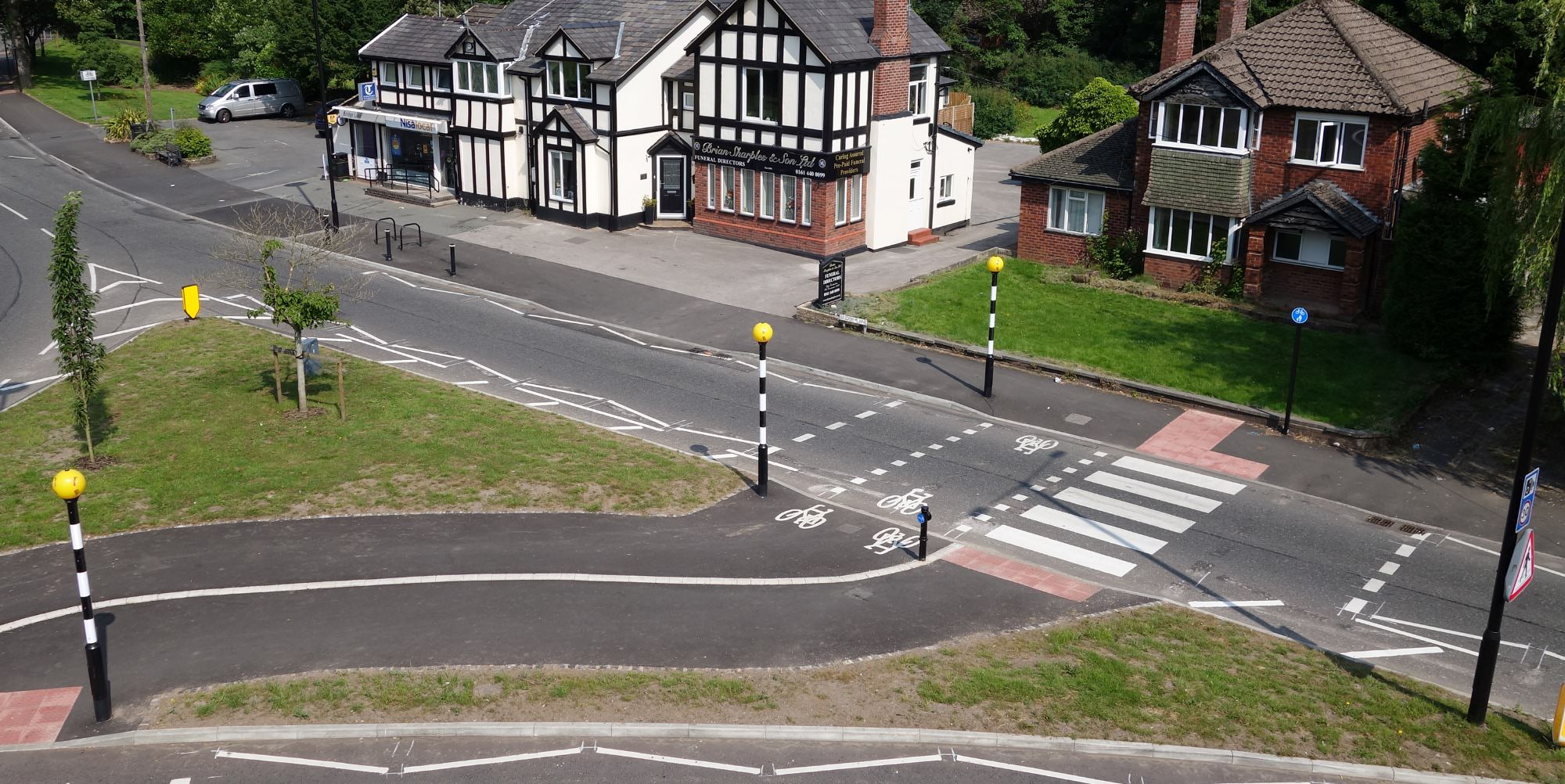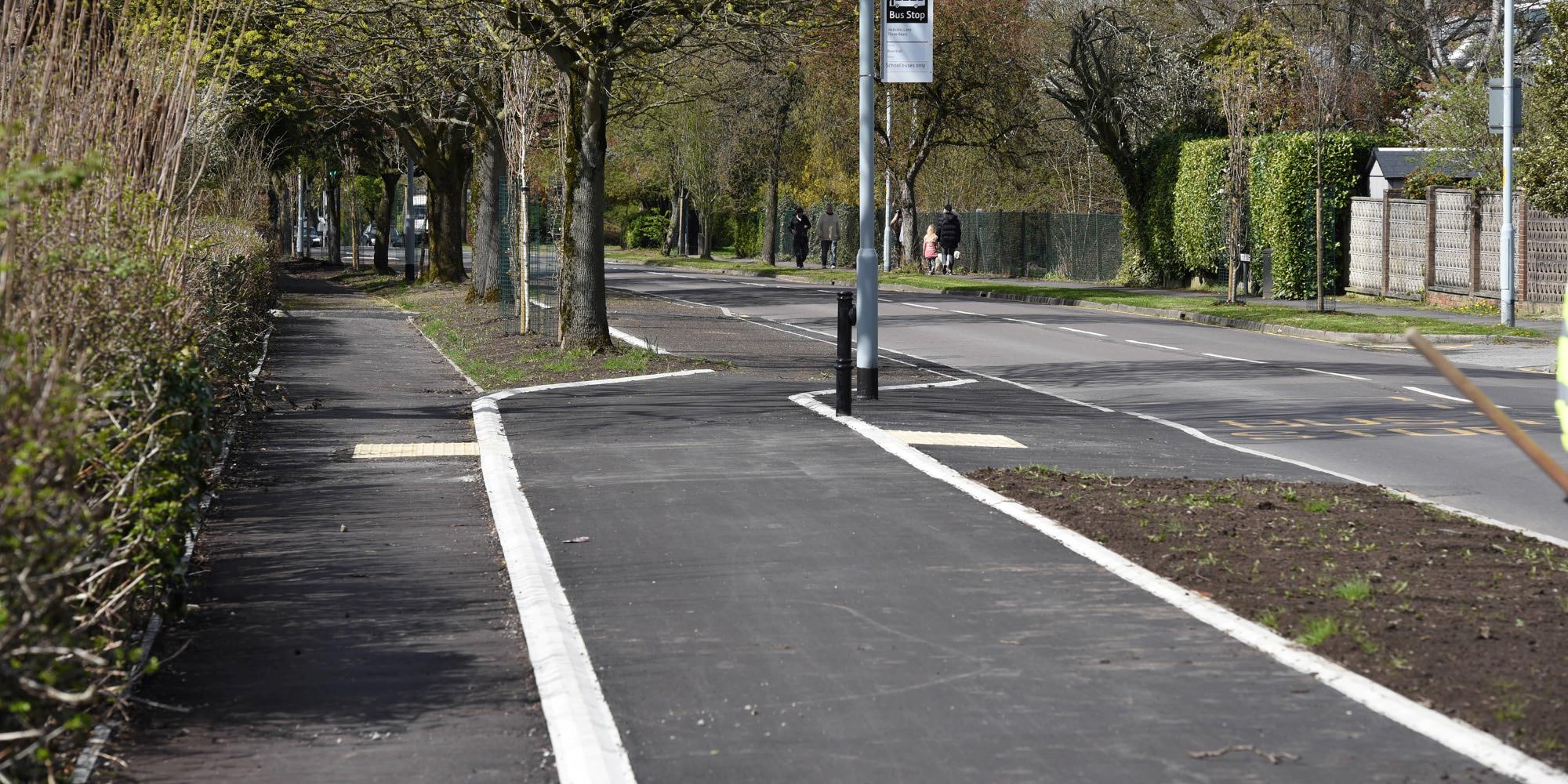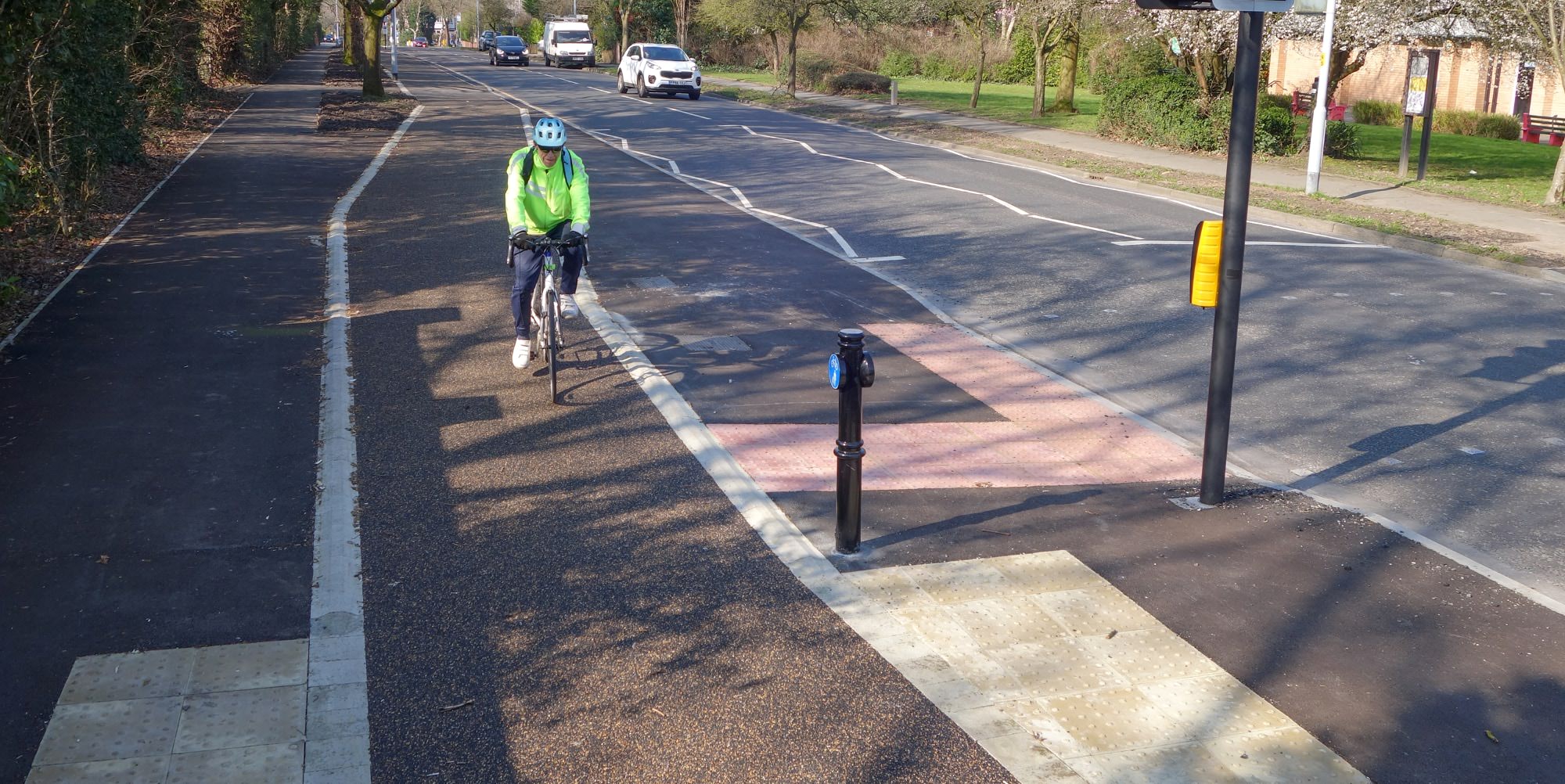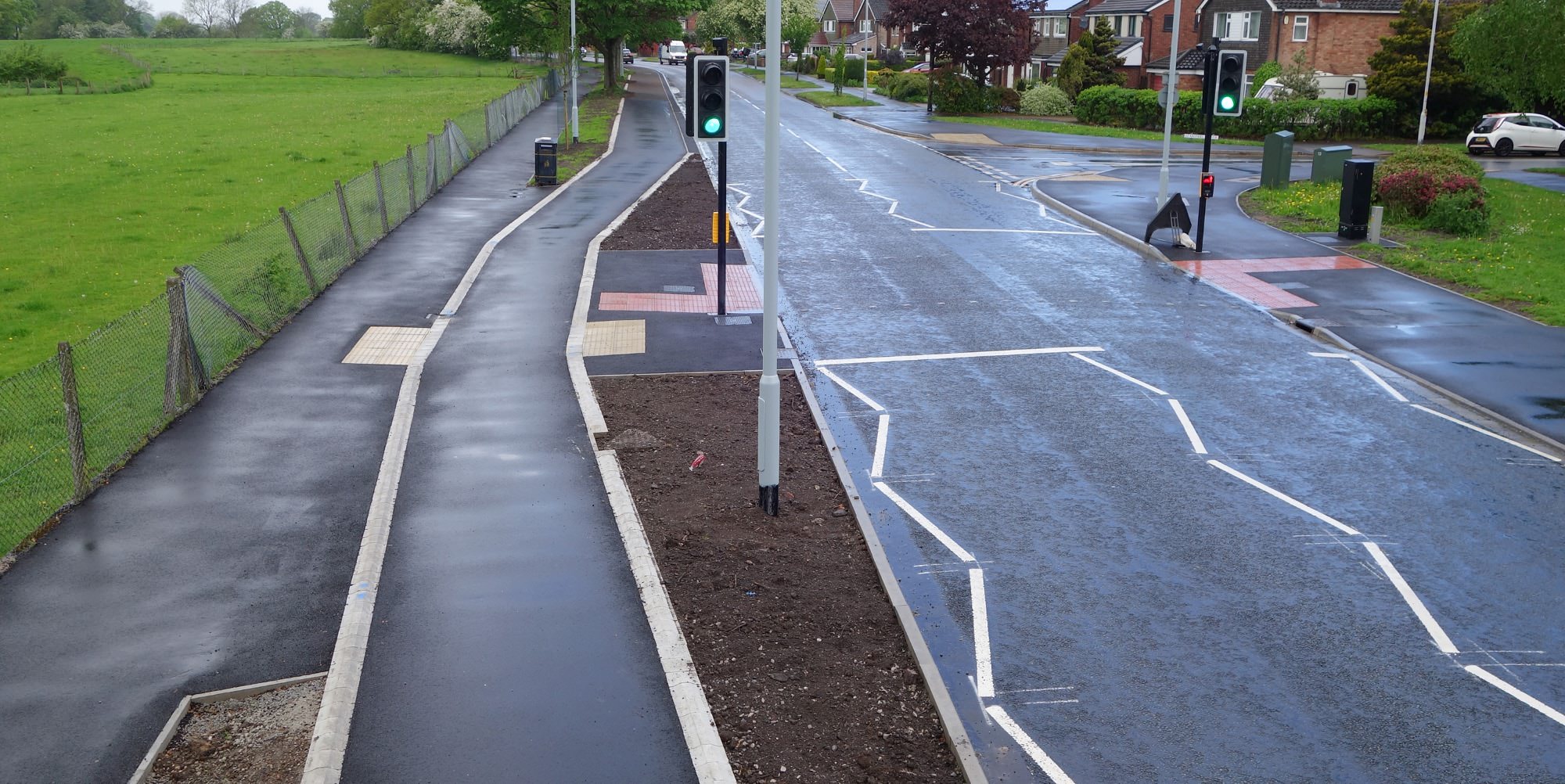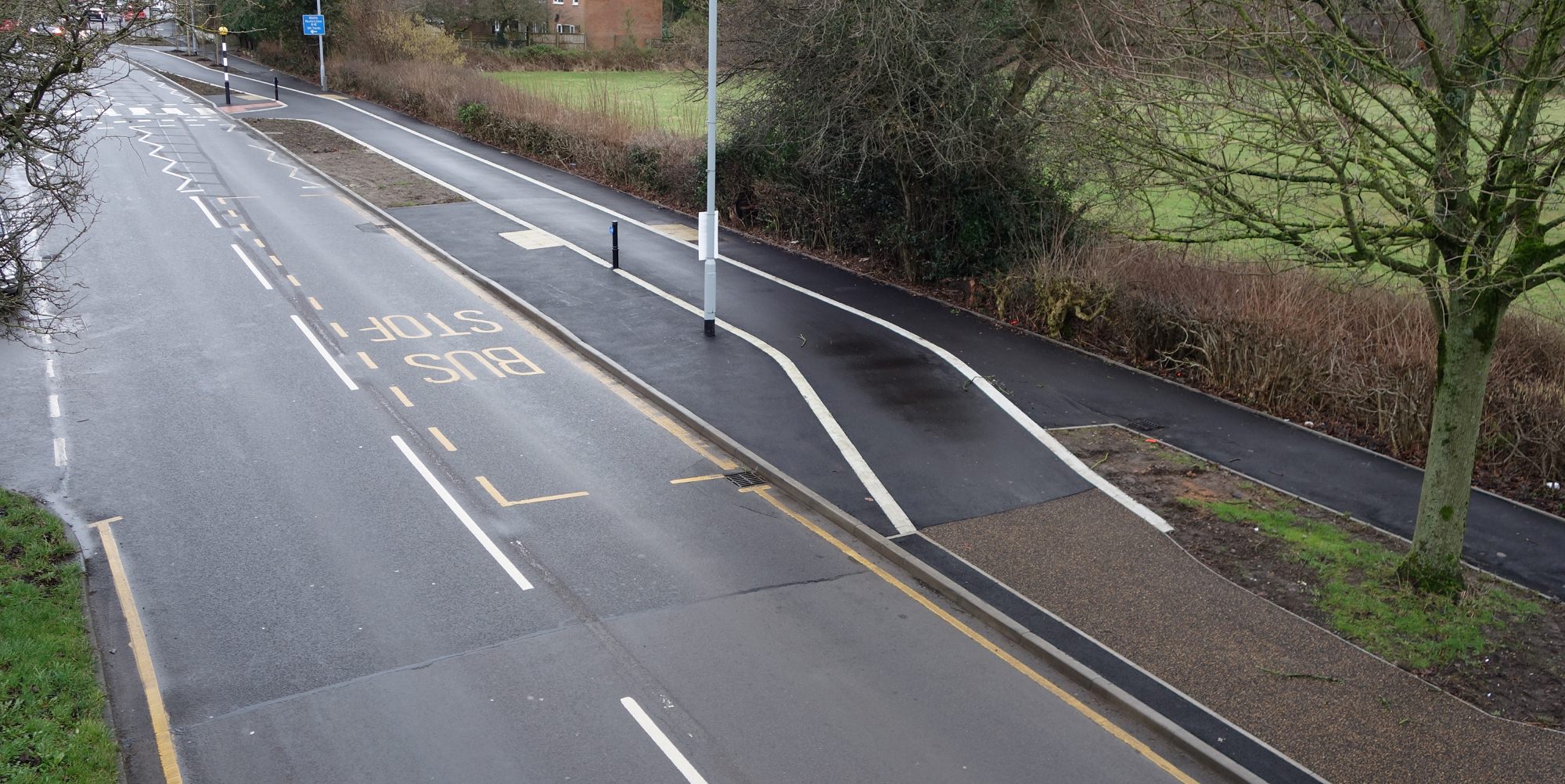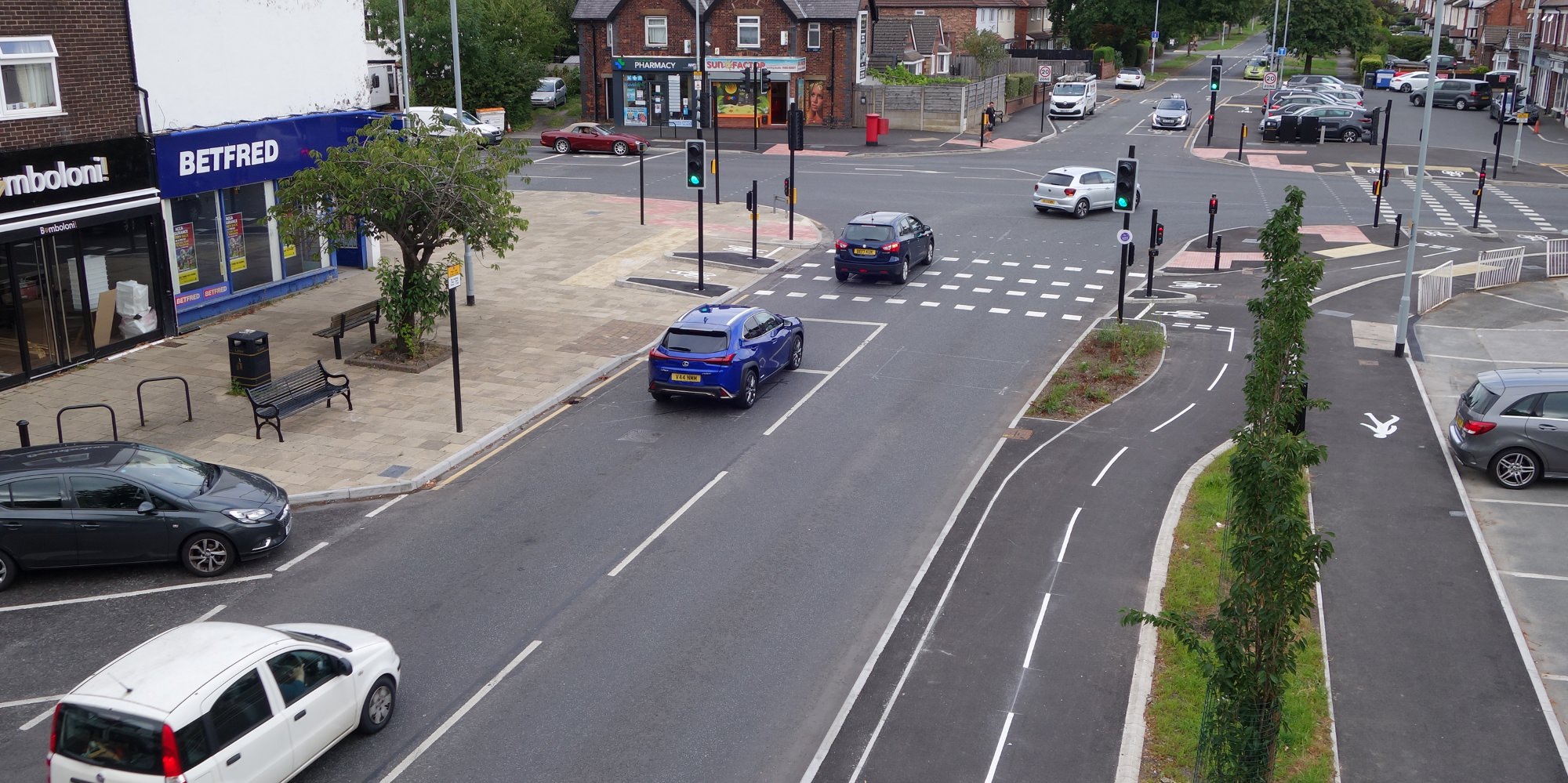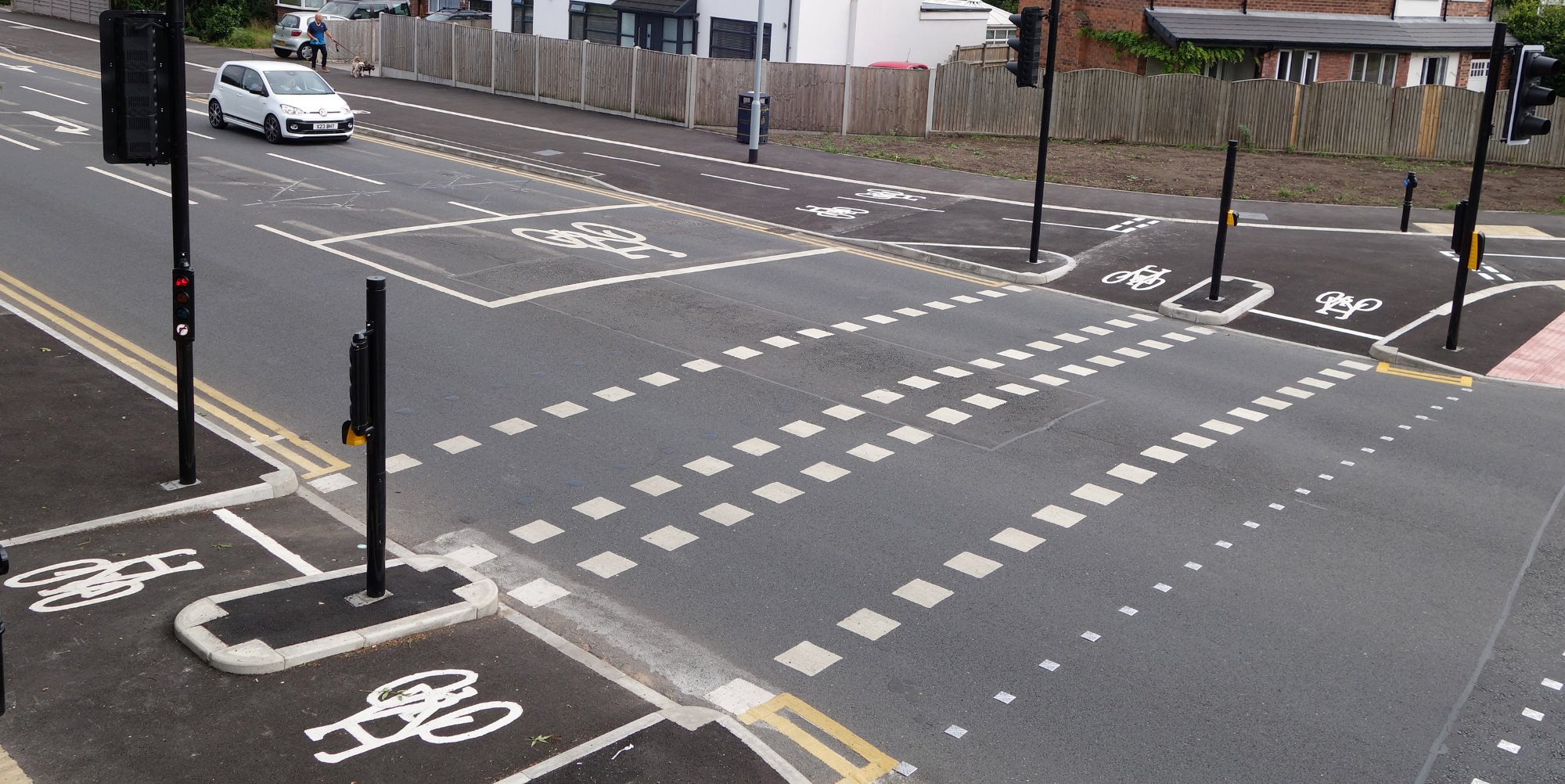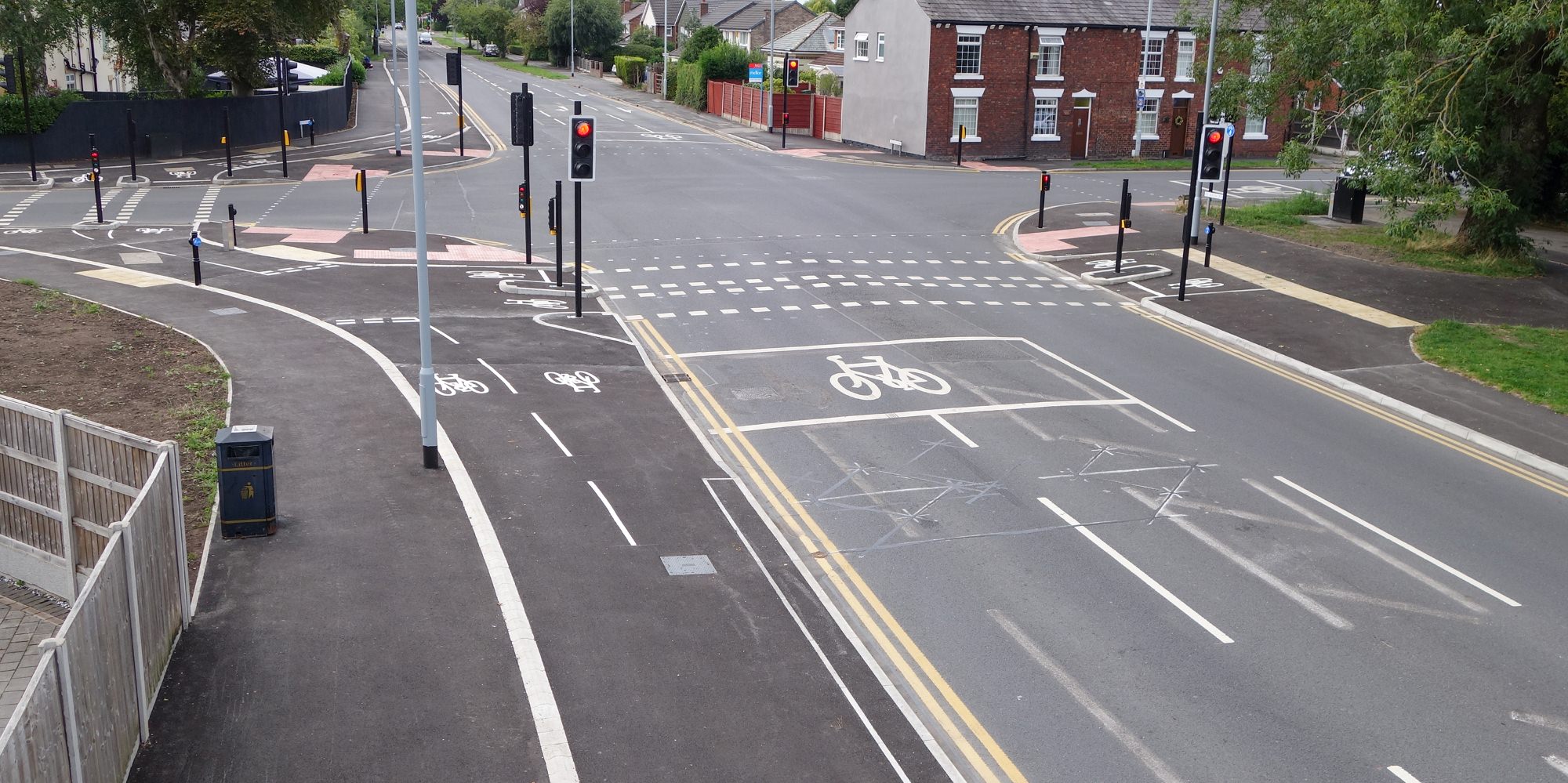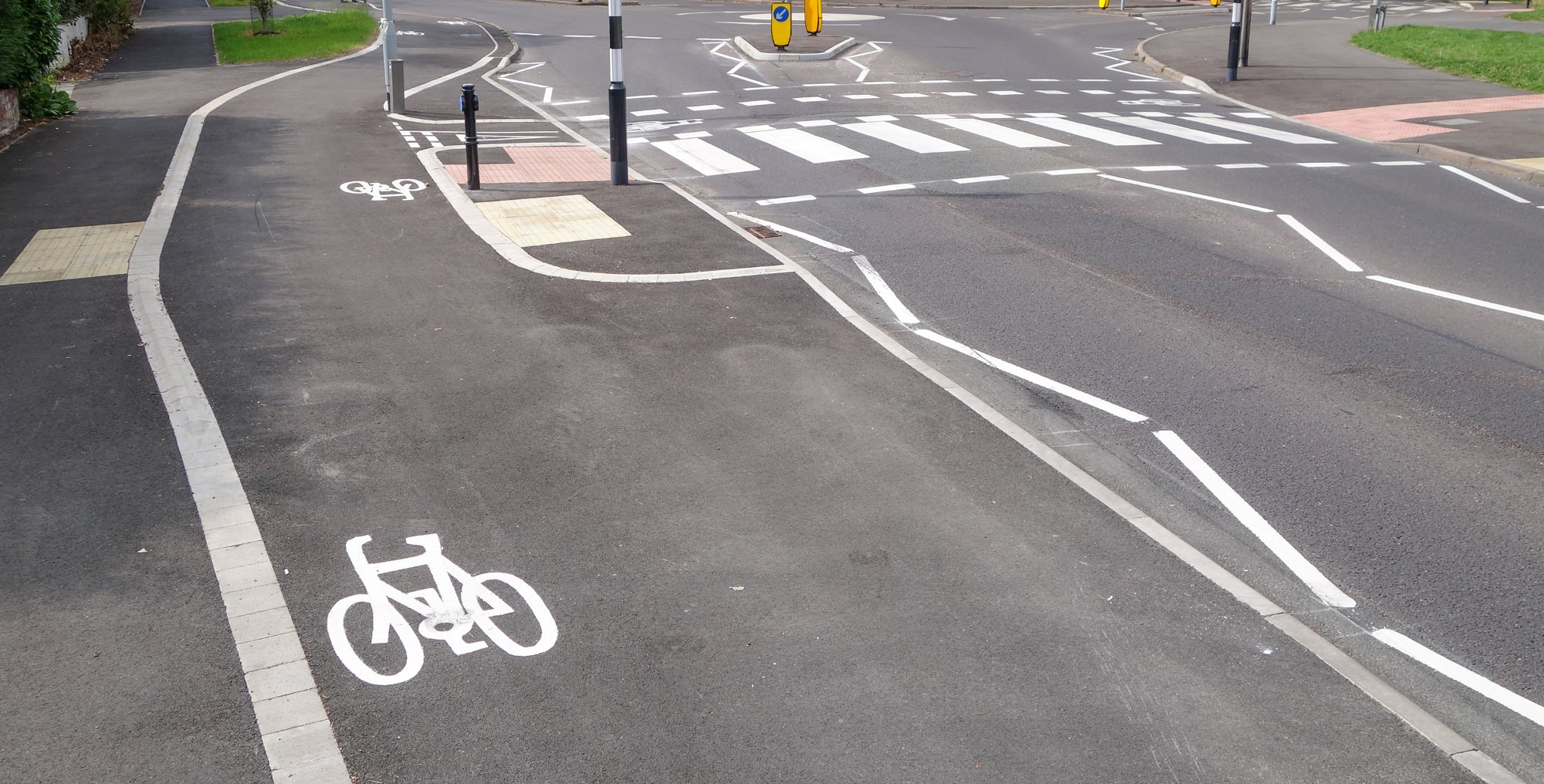This scheme was funded through MCF (Mayoral Challenge Fund) and formed part of the TfGM Bee Network. The Bee Network was designed to provide cycling and pedestrian improvements across Greater Manchester and to create an integrated transport system that will join together buses, trams, rail, cycling, and walking routes.
Due to the overall length of the completed cycle path and walkways, the project was split into 9 phases. The works consisted of converting part of the existing tree-lined grass verge into a cycleway to make space for a segregated 2-way cycle track at footway level and the installation of a toucan crossing for pedestrians and cyclists at the junction of Hartington Drive. The scope was to protect cyclists from general traffic, on a dedicated cycle track, with priority across side roads and new safe facilities at signalised junctions.
We collaborated with Stockport Council under the Strategic Alliance Framework, as we have previously done with great success during the TCAP (Town Centre Access Plan). By walking through each stage with the client to discuss potential construction and drainage issues, guiding them on their designs, and advising on the feasibility.
After receiving approval for work, we attended multiple ECI (Early Contractor Involvement) meetings with Stockport Council to clarify their key priorities and concerns before starting work on site. We took the approach of business as usual, to achieve minimal disruption to daily life and keep vehicular and foot traffic flowing within the area. We avoided working during school holidays and full road closures where possible to lessen our impact on traffic.
The cost was a concern for Stockport on some schemes, so we drew from our expertise to carry out value engineering exercises to bring the scheme within budget. This was achieved by altering materials, reusing, and recycling on-site, and carrying out cosmetic repair works. We were able to meet their budgetary requirements while still delivering the intended quality and functionality.
The main challenge was drawing up a working design that is compatible with the existing infrastructure. We worked in collaboration with Wildes in ECI meetings to thoroughly check designs for any issues so we could notify the client immediately. Using our expertise, we highlighted any problems promptly so designs could be amended quickly without affecting the timeframe. For example, we recognised heavy rainfall would overwhelm the drainage and pose a potential flood risk to the new cycleway and footpath, making it unusable; so we suggested an innovative idea of adjusting the design to enable the water to run off into the carriageway. By maintaining strong communication between the client, contractor, and designers we have been able to overcome challenging aspects of the project.
To ensure we went from strength to strength as we progressed through the scheme, an agreement with Stockport was made, in which we provided detailed performance reviews. This helped us to pinpoint strengths and weaknesses across all aspects and to derive KPI’s accordingly, maintaining continuous improvement. We held meetings between all partners before and after each phase to share feedback and review scores, helping us better our performance for future schemes.
While carrying out this scheme, we learned the effectiveness of delegating work and receiving support from the surrounding team as opposed to assigning single individuals to the role. We have also learned the value of close coordination, communication, and cooperation between the designer and contractor. Through clear and open conversations in ECI meetings, we can take on board valuable expertise to prevent problems on-site and avoid delays.
